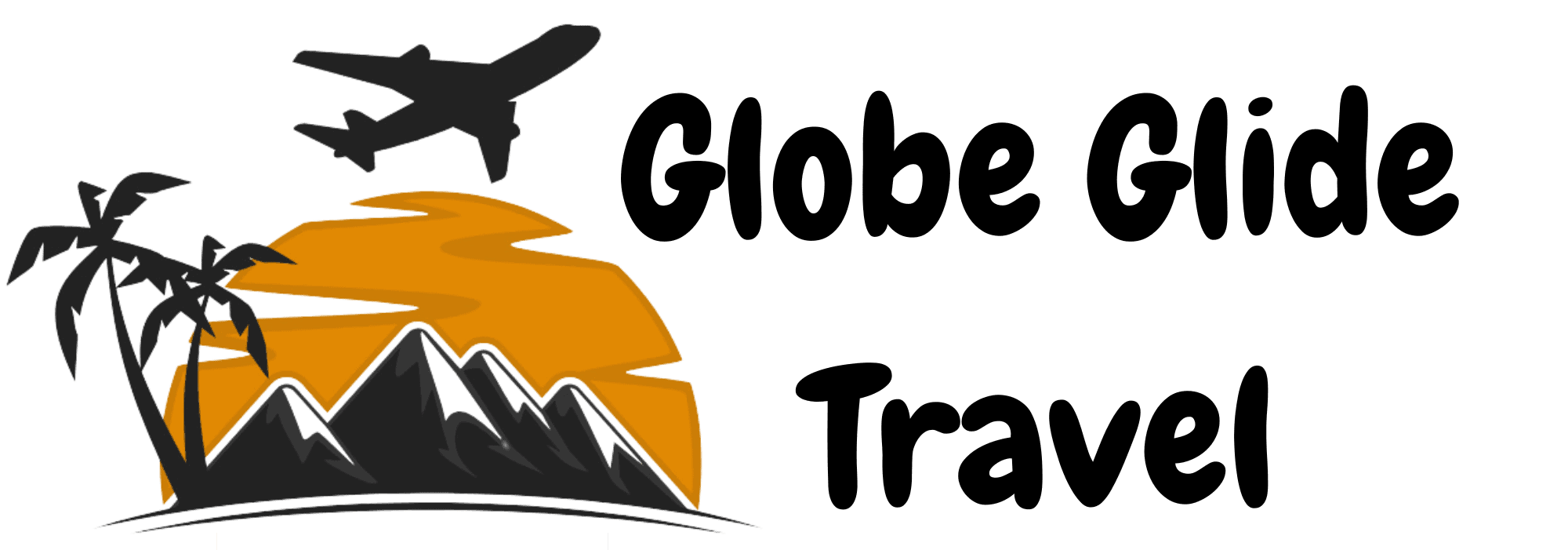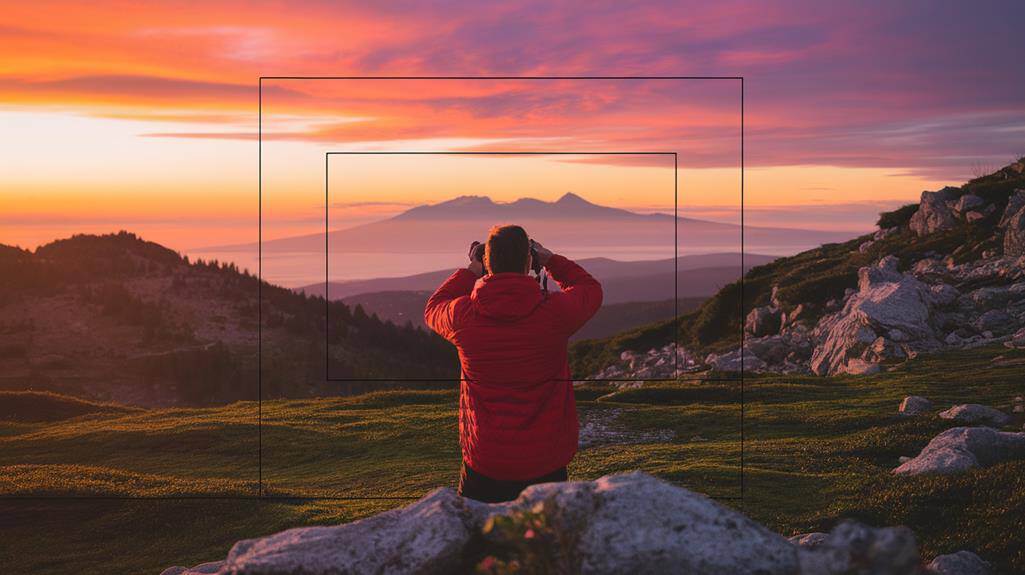
10 Best Travel Photography Composition Tips for Stunning Shots
To capture stunning travel shots, master these composition techniques: Apply the rule of thirds, use leading lines to guide the viewer's eye, frame your subject with natural elements, seek out symmetry and patterns, incorporate foreground interest, and utilize the golden ratio for balanced compositions. Consider perspective and scale to convey depth and size, balance elements within the frame for visual harmony, and employ contrast to add drama and interest. Experiment with different angles, focal lengths, and camera positions to find unique viewpoints. By implementing these strategies, you'll elevate your travel photography from ordinary snapshots to engrossing visual narratives. The following tips will further enhance your compositional skills.
In a Nutshell
- Apply the Rule of Thirds to create balanced, visually appealing images by placing key elements along grid lines or intersections.
- Utilize leading lines to guide the viewer's eye through the image, creating depth and a sense of perspective.
- Frame your subject using natural or man-made elements to draw attention to the focal point of your composition.
- Incorporate foreground interest to add depth and draw viewers into the scene, using complementary shapes, colors, and textures.
- Balance elements throughout the frame, considering visual weight, symmetry, and asymmetry to create a pleasing equilibrium.
Rule of Thirds
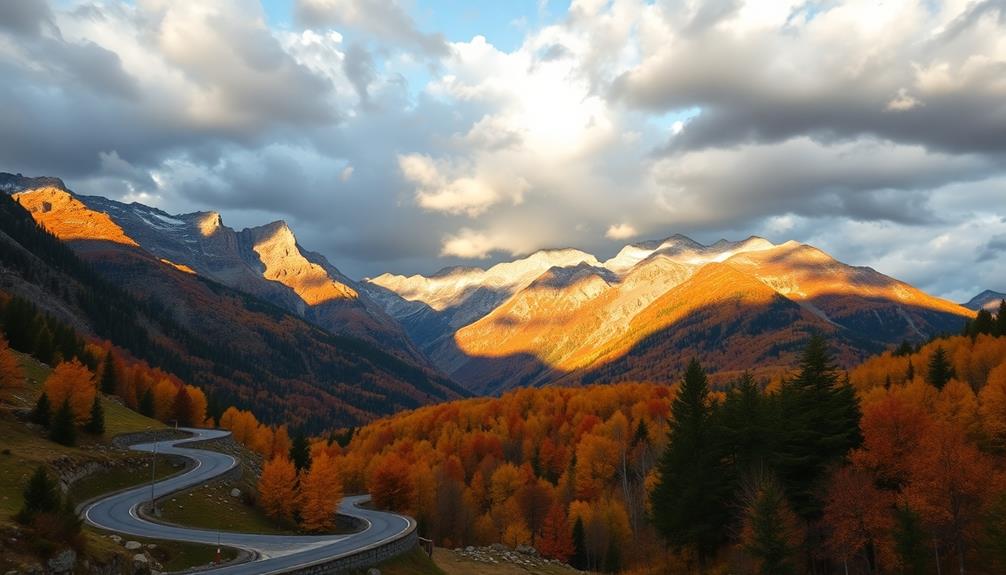
When it comes to travel photography, the Rule of Thirds is a fundamental composition technique you'll want to master. This principle involves mentally dividing your frame into a 3×3 grid and placing key elements along these lines or at their intersections. By positioning your subject off-center, you'll create a more balanced and visually appealing image that naturally draws the viewer's eye. When selecting the perfect travel camera, look for one with a built-in grid overlay feature to help you compose your shots more easily. This can be especially helpful for beginners who are still getting used to applying the Rule of Thirds in their photography. Many modern cameras offer a grid overlay feature, which can help you align your shots precisely. When photographing landscapes, try placing the horizon on either the upper or lower third line, depending on whether you want to emphasize the sky or foreground. For portraits, position your subject's eyes along the upper third line to create a compelling composition. Remember, while the Rule of Thirds is a valuable guideline, don't be afraid to break it intentionally for creative effect.
Leading Lines
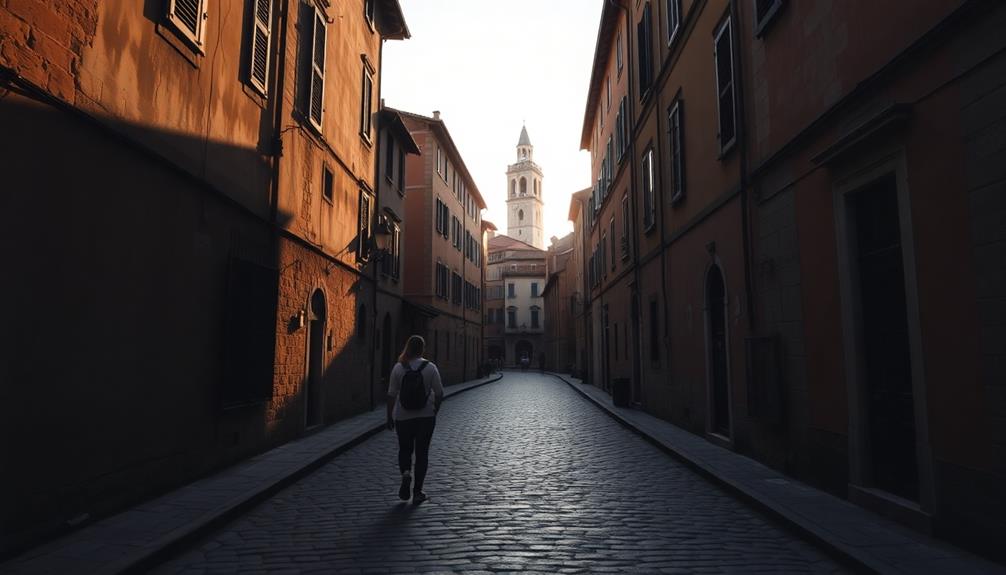
Leading lines frequently serve as powerful compositional tools in travel photography. These visual pathways guide the viewer's eye through the image, creating depth and drawing attention to the main subject. When composing your shot, look for natural or man-made elements that form lines, such as roads, railings, or architectural features. Position these lines to lead towards your focal point, enhancing the overall impact of your photograph. Using a lightweight travel tripod can help you maintain stability while experimenting with different angles and compositions, especially in low-light conditions or when using slower shutter speeds.
To effectively use leading lines in your travel photography:
- Experiment with different angles to find the most compelling line arrangement
- Incorporate curved or zigzag lines for added visual interest
- Use converging lines to create a sense of perspective and distance
Framing Your Subject
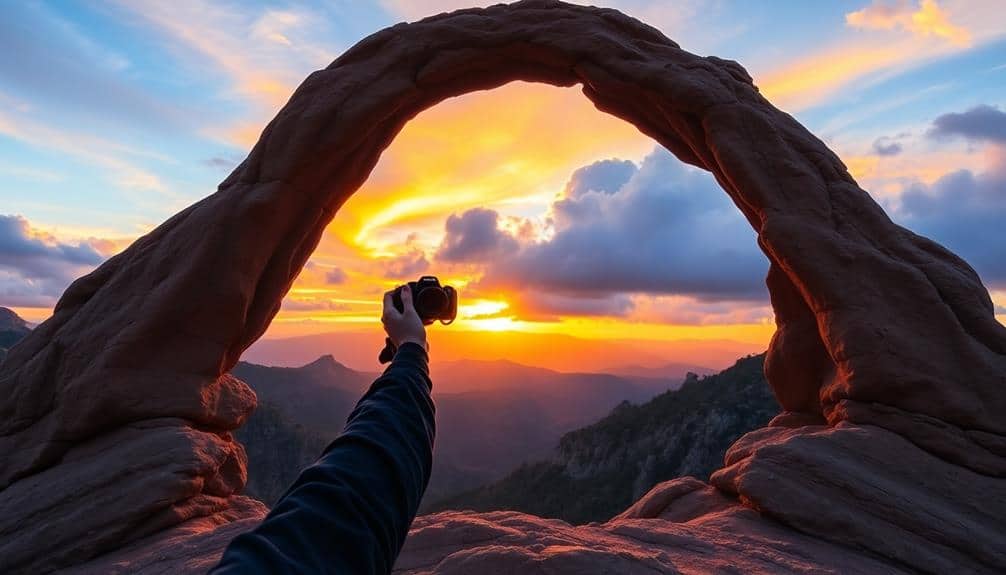
Framing your subject is another powerful composition technique that can elevate your travel photography. By using natural or man-made elements to create a border around your main subject, you'll draw the viewer's eye directly to the focal point of your image. Look for opportunities to frame your subject with archways, doorways, or windows, which can add depth and context to your shot. You can also use overhanging branches, rock formations, or even people to create a natural frame. When composing your shot, guarantee that the frame doesn't overpower the subject; it should enhance, not detract from, the main focus. Using a travel tripod can help you maintain stability and precision while framing your shots, especially in low-light conditions or when using slower shutter speeds. This certifies that your carefully composed frames are sharp and clear. Experiment with different framing elements and positions to find the most effective composition. Remember, framing can also provide a sense of place and scale, helping to tell a more complete story within your travel photographs.
Symmetry and Patterns
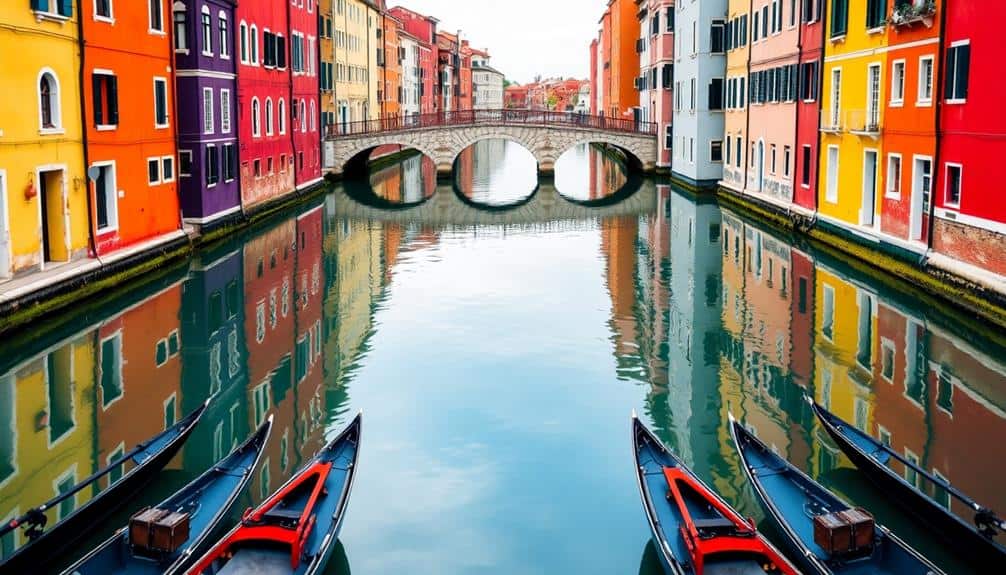
Symmetry and patterns are two powerful tools in a travel photographer's arsenal. When composing your shots, look for natural or architectural elements that exhibit these qualities. Symmetry creates a sense of balance and harmony, while patterns add visual interest and depth to your images. To effectively capture symmetry and patterns:
- Seek out reflections in water, glass, or polished surfaces to create mirror-like symmetry
- Look for repetitive elements in architecture, such as columns, arches, or windows
- Explore natural patterns in landscapes, like rows of trees or ripples in sand dunes
Position yourself to maximize the impact of these elements, often by centering your subject or using leading lines to draw the viewer's eye. Experiment with different angles and focal lengths to emphasize symmetry and patterns. Remember, breaking symmetry strategically can also create compelling compositions by introducing tension and visual interest.
Foreground Interest
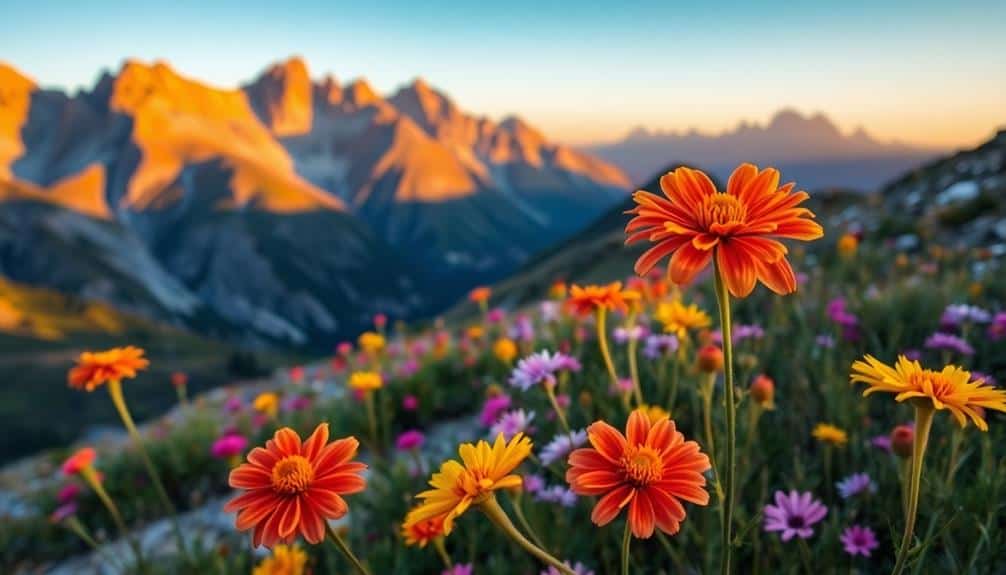
With foreground interest, you can add depth and context to your travel photographs. This technique involves incorporating elements in the front of your frame, drawing the viewer's eye into the scene. Look for objects like rocks, flowers, or architectural details that complement your main subject. Position these elements in the lower third of your composition, using them to lead the viewer's gaze towards the primary focus.
When selecting foreground elements, consider their shape, color, and texture. Guarantee they don't overpower the main subject but rather enhance it. Use a wide-angle lens to capture both the foreground and background in sharp focus. Experiment with different apertures to control depth of field; a smaller aperture (higher f-number) will keep more of the scene in focus. Remember, effective foreground interest should create a sense of place and immersion, transforming your travel photos from mere snapshots into compelling visual narratives.
Negative Space
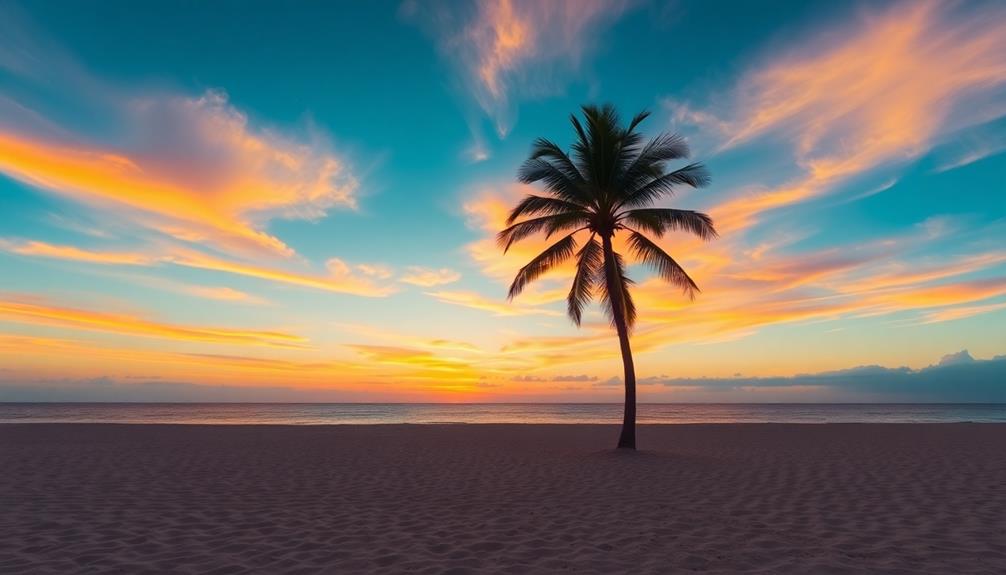
After mastering foreground interest, it's time to explore the power of negative space in your travel photography. Negative space, the unoccupied area surrounding your subject, can dramatically enhance composition and create visual impact. When used effectively, it draws attention to your main subject, creates a sense of scale, and evokes emotions like tranquility or isolation.
To incorporate negative space successfully:
- Look for expansive backgrounds like clear skies, calm waters, or empty walls
- Position your subject off-center, allowing ample space around it
- Experiment with different ratios of subject to negative space
You'll find that negative space can simplify complex scenes, reduce visual clutter, and add sophistication to your images. It's particularly effective in minimalist compositions, where the absence of elements becomes as important as the subject itself. By mastering this technique, you'll elevate your travel photography to new levels of artistry and impact.
Golden Ratio
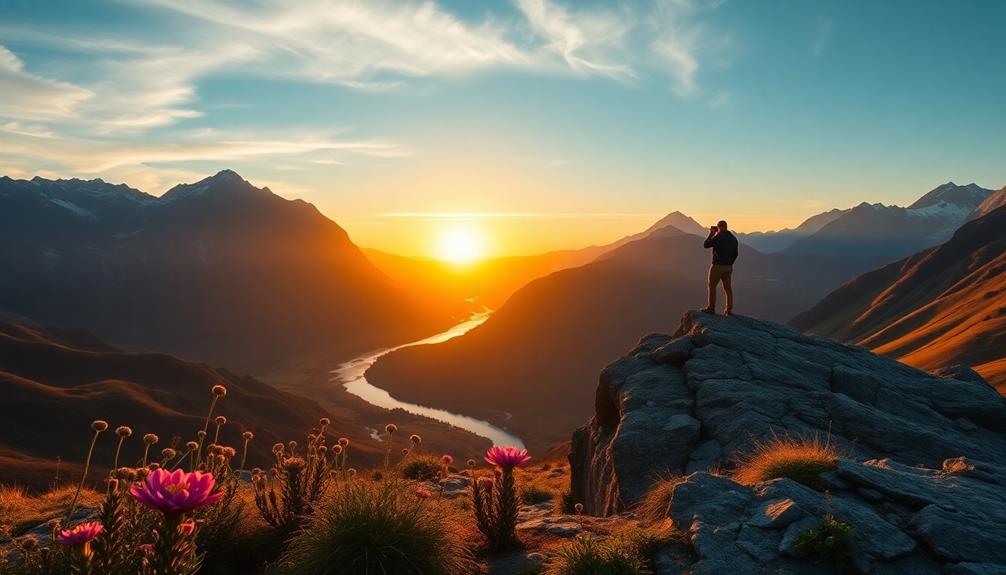
Ever heard of the golden ratio in photography? This mathematical concept, also known as the "divine proportion," has been used in art and architecture for centuries. In photography, it's a powerful compositional tool that can help you create visually pleasing and balanced images. The golden ratio is approximately 1:1.618, and it's often represented by a spiral or a series of rectangles. To apply it, divide your frame into a grid based on this ratio, then place key elements along these lines or at their intersections. Unlike the rule of thirds, which uses equal divisions, the golden ratio creates a more dynamic and natural-looking composition. You'll find that this technique works particularly well for landscapes, portraits, and architectural shots, giving your travel photos a sophisticated and harmonious feel.
Perspective and Scale
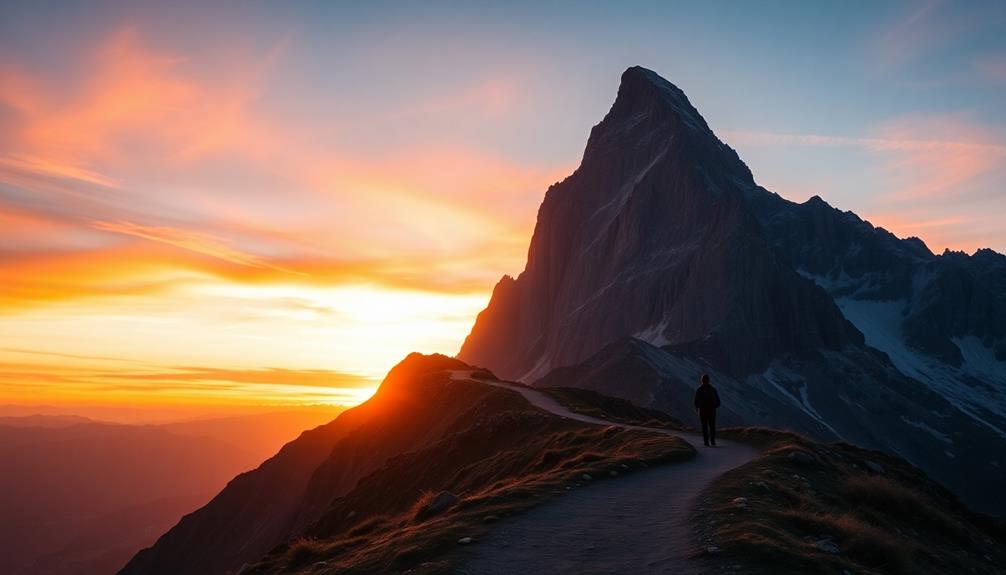
Perspective and scale play an essential role in creating impactful travel photographs. By manipulating these elements, you'll add depth, drama, and context to your images. To effectively use perspective and scale:
- Get low or high: Change your vantage point to create unique angles and emphasize subjects.
- Use leading lines: Incorporate natural or man-made lines to guide the viewer's eye through the image.
- Include people or familiar objects: Add recognizable elements to provide a sense of scale for large landscapes or structures.
When photographing landmarks, try positioning yourself at different distances to showcase varying perspectives. Experiment with wide-angle lenses to exaggerate foreground elements and create a sense of vastness in landscapes. Conversely, use telephoto lenses to compress distance and highlight specific details. Remember, by thoughtfully considering perspective and scale, you'll capture images that truly convey the essence and grandeur of your travel destinations.
Balancing Elements
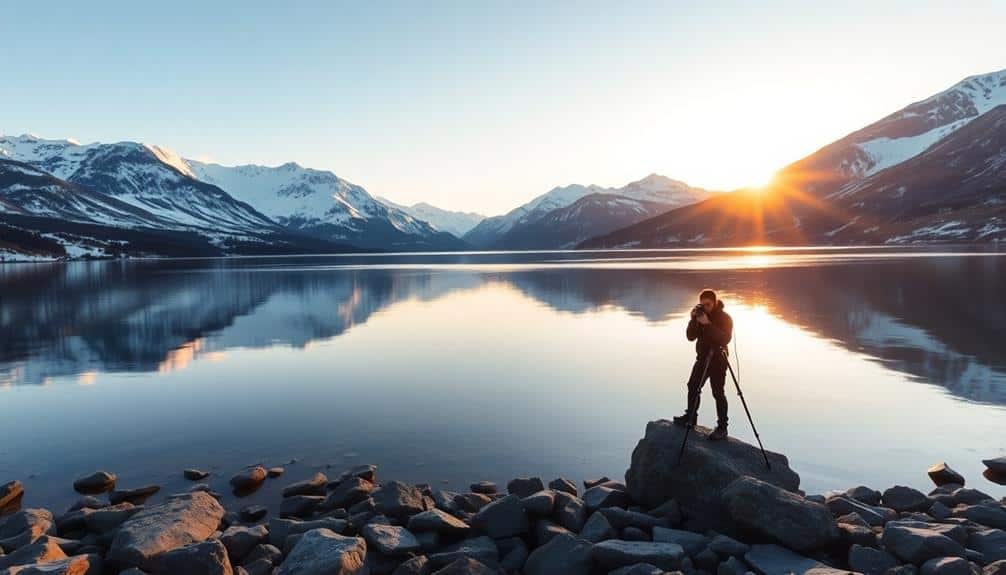
Balancing elements in your travel photography takes your composition skills to the next level. When framing your shot, consider the visual weight of each component and distribute them evenly throughout the frame. This technique creates harmony and prevents any single element from dominating the image. You'll want to pay attention to factors like size, color, and contrast when evaluating visual weight. For instance, a small, brightly colored object might balance a larger, more muted one.
Experiment with symmetry and asymmetry to achieve balance. Symmetrical compositions can provide a sense of order and calm, while asymmetrical arrangements often create tension and interest. Use the rule of thirds as a starting point, placing key elements along the gridlines or at their intersections. Remember, balance doesn't always mean perfect symmetry; it's about creating a visually pleasing equilibrium that guides the viewer's eye through the image.
Contrast in Composition
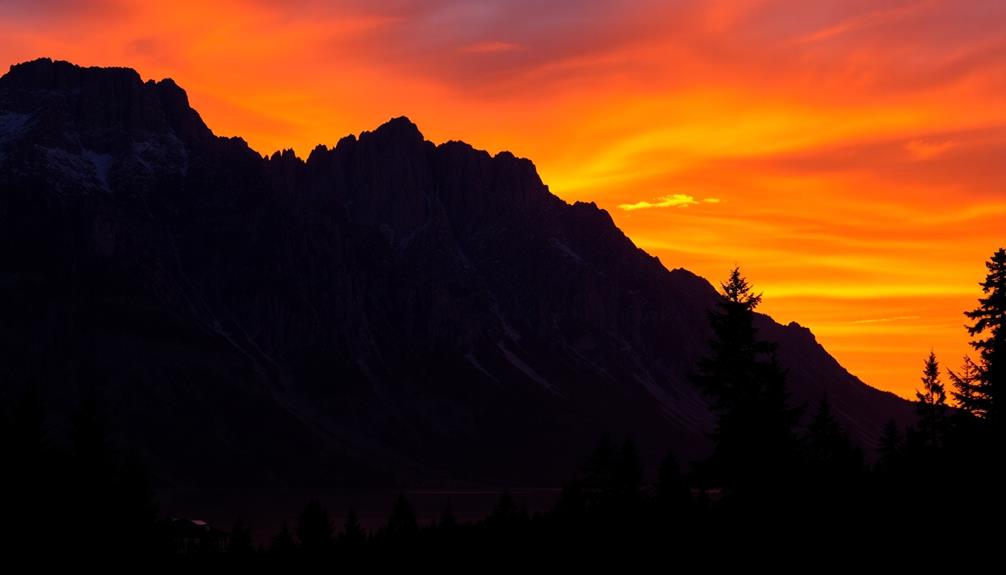
Contrast in composition often serves as a powerful tool to create visually striking travel photographs. By juxtaposing different elements within your frame, you'll draw the viewer's eye and create a dynamic image. To effectively use contrast, consider these key techniques:
- Light and shadow: Utilize the interplay between bright and dark areas to add depth and drama to your shots.
- Color contrast: Pair complementary colors or combine vibrant hues with muted tones to create visual interest.
- Size and scale: Juxtapose large and small elements to emphasize the grandeur or intimacy of a scene.
When composing your travel photographs, look for natural contrasts in your surroundings. You might find them in architectural details, landscapes, or even in the interplay between foreground and background elements. By mastering contrast, you'll elevate your travel photography, creating images that captivate and engage viewers long after your journey has ended.
Frequently Asked Questions
How Do I Choose the Best Camera Gear for Travel Photography?
Did you know that 86% of travelers consider their camera an essential item for trips? To choose the best gear for travel photography, start by evaluating your needs and budget. Consider a versatile mirrorless camera with interchangeable lenses for its compact size and high image quality. Opt for a wide-angle lens (16-35mm) for landscapes and a mid-range zoom (24-70mm) for versatility. Don't forget a sturdy, lightweight tripod and extra batteries. Prioritize weather-sealed equipment if you're heading to diverse climates.
What's the Ideal Time of Day to Capture Stunning Travel Shots?
The ideal time for stunning travel shots is during the "golden hours," which occur shortly after sunrise and before sunset. You'll find soft, warm light that enhances colors and creates long shadows, adding depth to your images. Early morning offers the advantage of fewer crowds, while sunset can provide dramatic sky colors. However, don't discount midday for certain subjects; harsh light can create interesting contrasts and textures, particularly in urban environments or for architectural details.
How Can I Protect My Camera Equipment in Diverse Weather Conditions?
To protect your camera equipment in diverse weather conditions, you'll need a combination of strategies. Invest in a high-quality, weather-resistant camera bag that can shield your gear from rain, dust, and extreme temperatures. Use silica gel packets to absorb moisture, and consider purchasing a waterproof camera housing for underwater shots. Always carry microfiber cloths to wipe away condensation, and utilize lens filters to protect your glass from scratches and debris. In extreme cold, keep spare batteries close to your body to maintain their charge.
Are There Any Legal Considerations When Photographing People or Landmarks Abroad?
When photographing abroad, you'll need to ponder various legal aspects. Always research local laws regarding photography, as some countries restrict photos of government buildings, military installations, or religious sites. You'll often need permission to photograph individuals, especially in private settings. Be aware of copyright laws for landmarks, which may limit commercial use. It's wise to carry model release forms for portraits and property release forms for private locations. Respect cultural sensitivities and local customs to avoid legal issues.
How Do I Manage and Organize My Travel Photos During Long Trips?
To manage your travel photos during long trips, you'll want to establish a robust organizational system. Start by backing up your images daily to an external hard drive or cloud storage. Create a folder structure that's logical, perhaps based on dates and locations. Use consistent file naming conventions, incorporating the date and a brief description. Consider using photo management software, like Adobe Lightroom, to tag and categorize your images. It's also wise to cull and delete poor shots regularly to save space.
